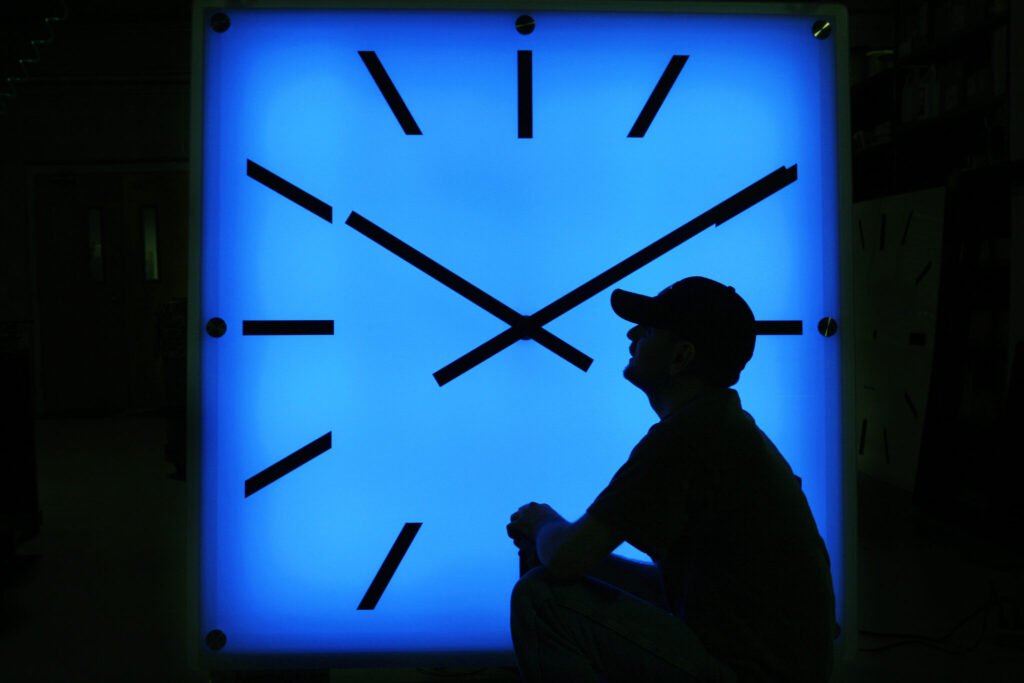Daylight saving ends Nov 2024/ time change health effects/ fall back time change/ circadian rhythm/ seasonal affective disorder/ Newslooks/ WASHINGTON/ J. Mansour/ Morning Edition/ Daylight saving time ends next Sunday, Nov. 3, giving most of the U.S. an extra hour of sleep but also bringing early evening darkness. This shift can disrupt sleep patterns and affect health. Here’s how to manage the adjustment and what it means for your body.
How to Prepare for the Health Effects as Daylight Saving Time Ends Quick Look
- Time Change Details: Clocks go back an hour at 2 a.m. on Nov. 3, 2024.
- Health Impacts: Shorter daylight can affect sleep and trigger seasonal affective disorder (SAD).
- How to Adjust: Gradually change bedtimes and increase morning light exposure to ease the shift.
- Ongoing Debate: Experts recommend permanent standard time to align better with human biology.
Daylight Saving Ends Soon: Tips to Adjust Smoothly
Deep Look
Daylight saving time ends Sunday, Nov. 3, at 2 a.m., when clocks across most of the U.S. will shift back an hour. While the extra hour of sleep may feel like a welcome bonus, the early arrival of darkness can disrupt our biological rhythms and impact health.
How the Body Reacts to Daylight Changes
Our bodies are deeply affected by light exposure, which plays a vital role in regulating our circadian rhythm. This “body clock” aligns with the natural day-night cycle and influences when we feel tired or alert. When the days get shorter, morning light becomes crucial to maintaining that rhythm, helping us feel awake and ready for the day. However, with evening darkness coming earlier, the production of melatonin—a hormone that signals drowsiness—can shift, making it challenging to fall asleep or wake up on time.
Changes in circadian rhythm affect more than just sleep. They also influence key bodily functions like heart rate, blood pressure, stress hormones, and metabolism. This is why even a small shift in time can disrupt our well-being, particularly when our body clocks have to realign.
Potential Health Impacts of Daylight Saving Changes
The autumn shift to standard time, known as “falling back,” is easier on the body than the spring shift. Still, darker evenings may pose challenges. Seasonal affective disorder (SAD), a type of depression tied to reduced sunlight exposure, can intensify as shorter days approach. The time change can also exacerbate sleep deprivation, which affects many U.S. adults and teens. According to the Centers for Disease Control and Prevention (CDC), one-third of U.S. adults sleep fewer than the recommended seven hours per night, and more than half of U.S. teens fall short of their optimal eight hours. Sleep deprivation is linked to various health risks, including heart disease, obesity, and cognitive decline.
Tips to Adjust to the Time Change
Gradually adjusting sleep schedules can help ease the body into the new time. Here are some ways to prepare for the shift:
- Adjust Bedtimes Slowly: Gradually shift your bedtime and wake-up time by 10–15 minutes each day leading up to the time change. This can help your body adjust more smoothly.
- Increase Morning Light Exposure: Spend more time outdoors in the morning light. This helps reset your circadian rhythm and can improve both sleep quality and mood.
- Limit Evening Light: Reduce exposure to bright lights in the evening, as too much light can disrupt melatonin production. Avoid screens an hour before bed if possible.
- Prioritize Sleep Quality: Try to maintain a consistent sleep schedule even after the time change, as regular sleep can improve mood, energy, and overall health.
The Debate on Permanent Time
The twice-yearly time change has prompted discussion among health experts, who generally support making standard time permanent. The American Medical Association and the American Academy of Sleep Medicine argue that permanent standard time aligns best with natural daylight and human biological rhythms. In recent years, the U.S. Congress has considered bills like the Sunshine Protection Act, which would make daylight saving time permanent. However, many experts believe lawmakers should prioritize permanent standard time instead, as it’s believed to reduce sleep disruption and related health risks.
States and Countries Without Daylight Saving
Currently, most U.S. states observe daylight saving time, with Arizona and Hawaii as exceptions. In those states, clocks remain on standard time year-round. While the U.S. and Europe change clocks twice yearly, most countries around the world do not observe daylight saving.
As the fall season progresses, adjusting gradually to shorter days can help alleviate potential health effects. With a focus on maintaining consistent sleep and prioritizing morning light exposure, the transition to standard time may be smoother and healthier.







